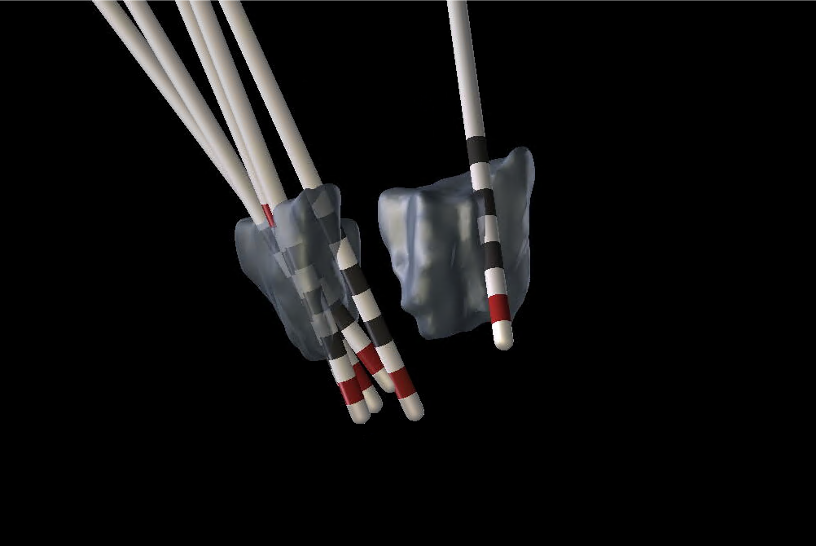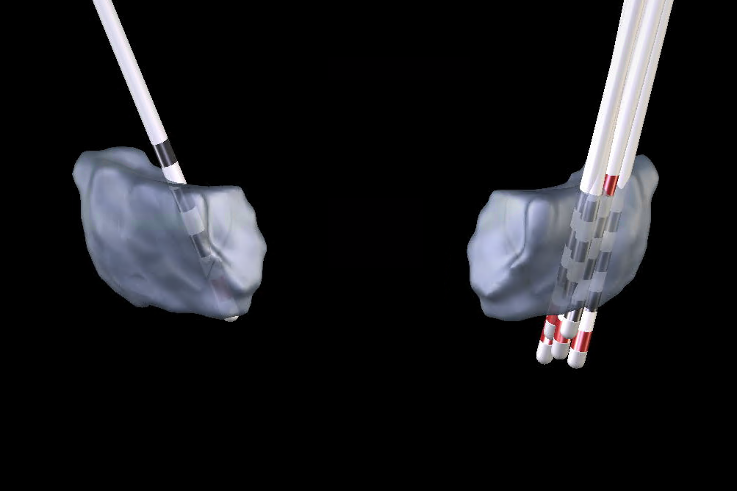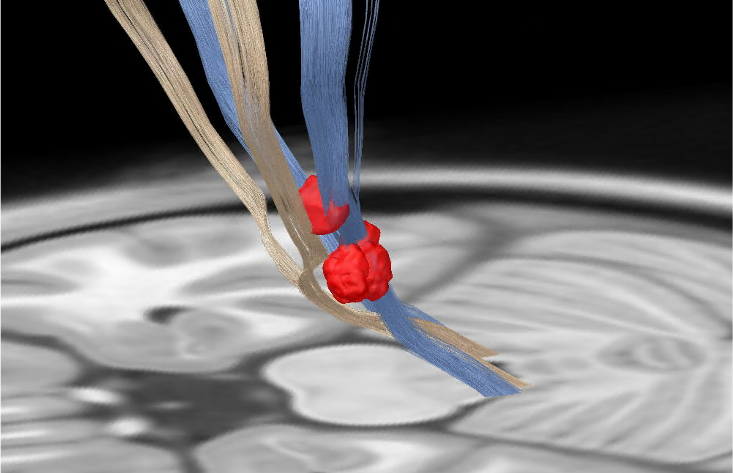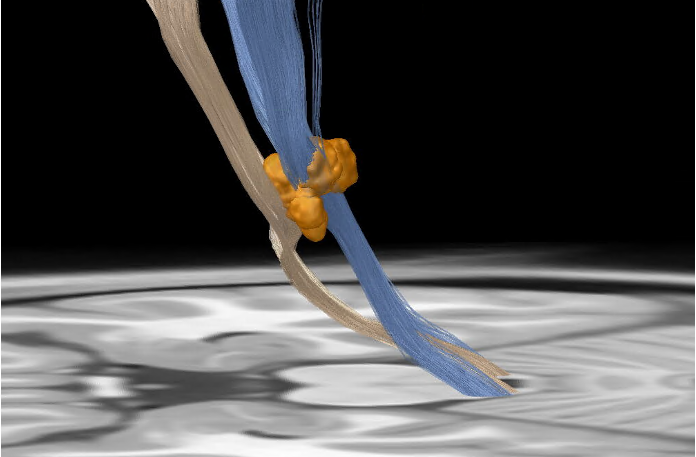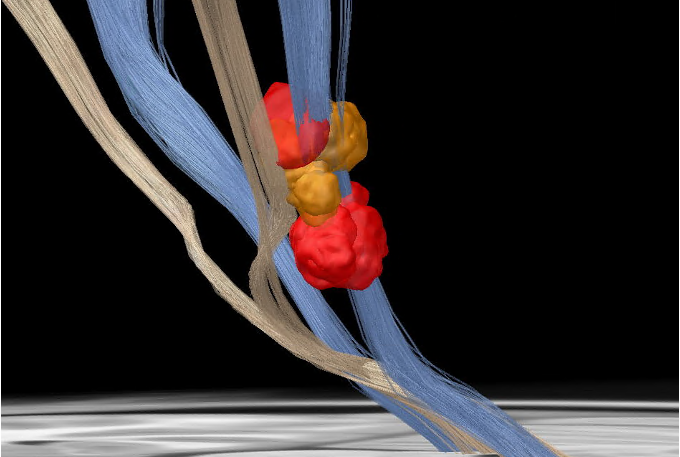Objective: To characterize stimulation-induced ataxia in Essential Tremor patients treated with VIM DBS.
Background: In Essential tremor (ET) patients with medically refractory tremor, deep brain stimulation (DBS) is a proven, safe and effective treatment. The most common DBS target for ET is the ventralis intermedius (VIM) nucleus of the thalamus. Given the narrow dimensions of the VIM, stimulation-induced side effects (SISE) can limit the ability to deliver optimal therapeutic benefit. Ataxia is one such SISE that is well described and thought to be associated with stimulation of the dentato-rubro-thalamic-tract (DRTT).
Method: A retrospective study of consecutive ET patients who underwent VIM DBS from 2019-2021 was performed. Programming parameters and presence of ataxia was collected at two time points: 1. the initial programming session and 2. six months post-DBS implantation. Pre-operative MRI brain and post-operative CT head sequences were co-registered, and the DBS leads were localized in MNI space using Lead-DBS. The volume of tissue activated (VTA) was estimated for the programming parameters associated with ataxia and those without at both timepoints. Voxelwise analysis of the VTAs was conducted to calculate the degree of overlap with the DRTT.
Results: 96 VIM leads were analyzed from 77 ET patients. Stimulation-induced ataxia was documented during monopolar review in 7 leads (7.3%). 6 leads had ataxia associated with contact 0 and 1 lead with contact 3 [figure1,figure2]. Mean amplitude of stimulation induced ataxia was 2.5V(+ 0.9V). 67% of VTAs causing ataxia intersected the non-decussating DRTT [figure3] while none of the VTAs causing ataxia intersected with the decussating DRTT [figure4]. 83% of leads showing acute ataxia were found to be ventral and medial compared to chronic, non-ataxic contacts [figure5].
Conclusion: Stimulation-induced ataxia was primarily associated with VTAs that were located ventral and medial to the VIM thalamus. A majority of the VTAs intersected the non-decussating DRTT while none of the VTAs intersected the decussating DRTT.
To cite this abstract in AMA style:
V. Chandra, Y. Mehkri, A. Desai, C. Hanna, J. Hernandez, J. Yu, J. Frey, J. Wong, J. Hilliard, K. Foote. Acute Stimulation-Induced Ataxia From Thalamic Deep Brain Stimulation [abstract]. Mov Disord. 2022; 37 (suppl 2). https://www.mdsabstracts.org/abstract/acute-stimulation-induced-ataxia-from-thalamic-deep-brain-stimulation/. Accessed January 6, 2026.« Back to 2022 International Congress
MDS Abstracts - https://www.mdsabstracts.org/abstract/acute-stimulation-induced-ataxia-from-thalamic-deep-brain-stimulation/

